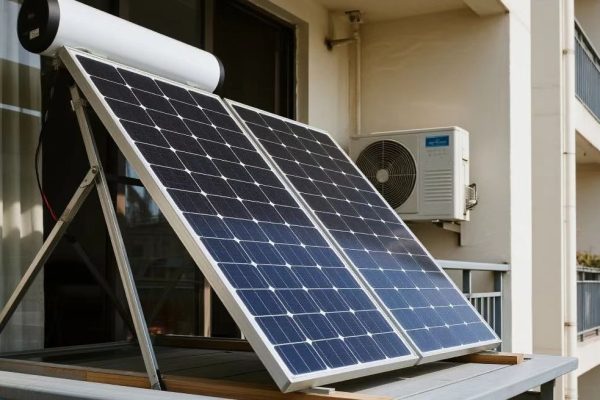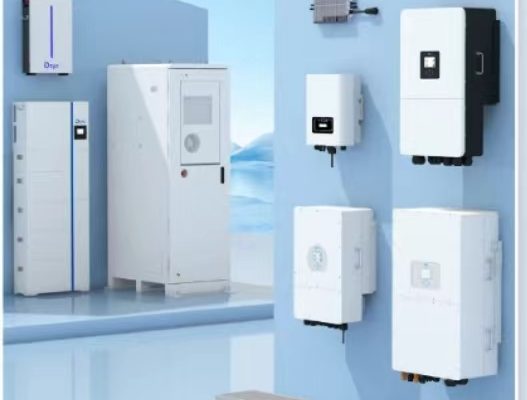Farms increasingly face rising energy costs and the need for reliable, sustainable power. A 10 kW hybrid energy storage system — combining solar PV, battery storage, and a hybrid inverter — can provide a cost-effective solution for self-sufficiency, load management, and backup power.
This article explores the components, costs, and considerations when designing and deploying a 10 kW hybrid system for agricultural applications.
1. Why Farms Need a 10 kW Hybrid System
1.1 Energy Demand on Farms
Farms have unique power profiles:
- Daytime load: irrigation pumps, fans, and lighting
- Nighttime load: refrigeration, lighting, security
- Seasonal peaks: harvesting and processing operations
Energy demand can fluctuate, making grid-only supply unreliable or expensive.
1.2 Hybrid Systems Offer Solutions
A hybrid system:
- Charges the battery from solar PV during the day
- Discharges to power loads during peak hours or outages
- Integrates with the grid to sell excess energy or avoid high tariffs
💡 Result: Reduced energy costs, enhanced reliability, and potential for self-consumption optimization.
2. Key Components of a 10 kW Hybrid System
A complete 10 kW hybrid system typically includes:
2.1 Solar PV Array
- Generates DC power from sunlight
- Sizing depends on daily energy demand and available roof/ground space
- Typical farm setup: 15–20 kW PV array to charge 10 kW battery and cover daily loads
2.2 Hybrid Inverter / PCS
- Converts DC power from PV or battery to AC for farm loads
- Handles bidirectional power flow: charge battery and export/import grid power
- Features to consider:
- AC and DC coupling capability
- Peak shaving and load management
- Remote monitoring & EMS integration
2.3 Battery Storage
- Provides backup and load shifting
- Typical for 10 kW hybrid system: 20–40 kWh LFP battery
- Key factors: cycle life, depth of discharge, temperature tolerance
2.4 Combiner Boxes and Breakers
- Aggregate multiple PV strings
- Provide overcurrent protection
- Include DC and AC isolation switches
2.5 Energy Management System (EMS)
- Coordinates PV production, battery usage, and load demands
- Optimizes self-consumption
- Sends alerts and monitoring data to farmers
2.6 Mounting Structures and Cabling
- Roof-mounted or ground-mounted PV racks
- Weatherproof enclosures for inverter and battery
- Pre-wired or labeled cables for easy installation
3. System Sizing Considerations
| Parameter | Typical Value | Notes |
|---|---|---|
| Hybrid Inverter | 10 kW | Matches peak farm load |
| Battery Capacity | 20–40 kWh | 2–4 hours of backup for peak loads |
| PV Array | 15–20 kW | Covers average daily load + battery charge |
| Voltage | 48V–768V DC | Depends on inverter and battery type |
| Load Profile | 5–10 kW average | Include pumps, lights, refrigeration |
⚙️ Example:
A farm with 7 kW average daytime load and 25 kWh daily consumption could use a 10 kW inverter + 30 kWh battery + 18 kW PV array to maximize self-consumption.
4. Cost Breakdown
Approximate costs for a 10 kW hybrid farm system (2025 pricing, USD):
| Component | Typical Cost | Notes |
|---|---|---|
| PV Panels | $7,000–$9,000 | 15–20 kW, Tier 1 modules |
| Hybrid Inverter | $3,000–$5,000 | 10 kW, AC/DC bidirectional |
| Battery Bank | $10,000–$15,000 | 20–40 kWh, LiFePO₄ |
| Mounting & Cabling | $1,500–$2,500 | Roof or ground mount, pre-wired |
| Combiner Boxes & Breakers | $500–$1,000 | Safety and code compliance |
| EMS & Monitoring | $500–$1,000 | Optional cloud or local monitoring |
| Total Estimated Cost | $22,500–$33,500 | Excluding installation labor |
⚠️ Costs vary by region, battery brand, and PV module tier.
5. Installation Tips for Farms
- Site Survey:
Assess roof/ground area, shading, orientation, and local grid conditions. - Pre-Wired Kits:
Consider pre-wired battery and inverter cabinets to reduce installation time. - Thermal Management:
Use ventilated enclosures for battery racks, especially in hot climates. - Surge & Lightning Protection:
Farms are often exposed — include proper SPD devices. - Grid Connection:
Confirm local utility rules for exporting excess PV or using net-metering. - Maintenance Access:
Leave space for easy inspection and potential expansion.
6. Benefits for Farms
- Cost Savings: Reduced electricity bills and demand charges
- Energy Security: Backup during grid outages
- Load Management: Shift daytime PV production to peak evening usage
- Sustainability: Lower carbon footprint, supports green certifications
- Scalability: Future expansion possible with modular batteries
7. Typical Farm Applications
- Irrigation Pumping: Reduce peak grid draw during high-water demand periods.
- Greenhouse Lighting & Climate Control: Ensure continuous operation even during grid outages.
- Cold Storage & Refrigeration: Protect perishable produce with battery backup.
- Processing Equipment: Farm processing machinery can run on stored solar energy.
- Electric Vehicle Charging for Farm Vehicles: Charge EV tractors or utility vehicles using PV + battery.
8. Financing & ROI
8.1 Simple Payback
- Assuming $0.12/kWh retail electricity cost, solar self-consumption of 80%, and battery offset:
- 10 kW system with 30 kWh battery can save ~$3,500–$4,500 per year.
- Estimated payback: 5–7 years (depending on incentives).
8.2 Incentives
- Many regions offer tax credits, grants, or net-metering for solar + storage on farms.
- Renewable energy programs can accelerate ROI.
9. Maintenance Recommendations
- Monthly: Visual inspection, check breakers, clean PV modules
- Quarterly: Test battery state of charge, monitor EMS logs
- Annually: Full system inspection, firmware updates, calibration of monitoring systems
⚠️ Keeping the system well-maintained extends battery and inverter life, often beyond 10–15 years.
10. Future Expansion Possibilities
- Increase Battery Capacity: For longer backup duration
- Add Additional PV Modules: To meet growing energy needs
- Integrate EV Fleet Charging: Combine with hybrid system for farm EVs
- Implement Smart EMS: Optimize energy flows for cost reduction and load management
A 10 kW hybrid system for farms provides:
- Reliable, clean, and cost-effective energy
- Backup power for critical operations
- Flexibility to expand or integrate with future renewables
✅ Key Takeaways:
- Proper component selection (PV, inverter, battery) ensures long-term performance
- Pre-wired or modular cabinets reduce installation time
- Cost savings and ROI depend on self-consumption, incentives, and local electricity tariffs
- EMS and monitoring enable smarter energy management
Farms can leverage these systems to cut energy costs, reduce carbon footprint, and improve operational resilience, making hybrid energy storage a practical investment for agricultural sustainability.









